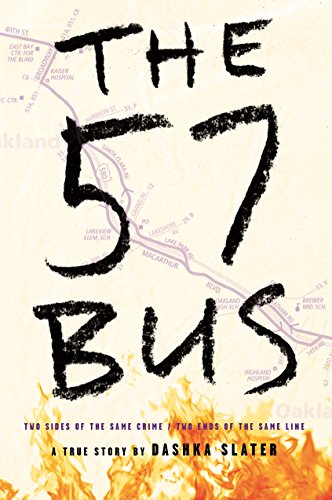 This time I’m reviewing a nonfiction book, something I don’t do very often. But I devoured this one. It tells the story of an attack on an agender teen by a Black teen on a bus in Oakland, California, and the aftermath. But it delves into the lives of both teens as well as the justice system and provides a really objective view of all the issues surrounding the attack.
This time I’m reviewing a nonfiction book, something I don’t do very often. But I devoured this one. It tells the story of an attack on an agender teen by a Black teen on a bus in Oakland, California, and the aftermath. But it delves into the lives of both teens as well as the justice system and provides a really objective view of all the issues surrounding the attack.
The book starts with Sasha, the agender teen (this is the term they use for the majority of the book, rather than nonbinary), talking about their background, friends, school, and so on. Sasha was eighteen and a senior in a progressive private school. I really got a sense for who this person was from the section.
Then the book covers Richard, the Black sixteen-year-old. He’d had a tough time, losing friends to murder and getting robbed at gunpoint by someone he thought was a friend. He’d spent some time in a group home after getting in trouble for fighting (this whole thing seemed pretty sketchy to me—I’m pretty sure a white kid in that situation wouldn’t have ended up in a group home). But he was back at school and apparently trying to do well enough to graduate, something that would have made him stand out a little with his peers.
The next section of the book deals with the attack itself. Sasha was asleep on the bus when Richard started messing with a lighter, flicking it on just under the hem of Sasha’s skirt. He was goofing around, not appreciating what would really happen. He thought it would light and fizzle out, but instead the whole thing caught on fire (as anyone with a fully-developed brain would probably realize, or at least realize as a possibility). A stranger on the bus helped put the fire out but Sasha’s legs had serious burns, including spots that were third-degree (which means it burned all the way through the skin and into the fat, in case you didn’t know what that was). We learn a little about the ordeal Sasha had to go through to recover, but the book doesn’t dwell on it.
The next section covers what happened to Richard, basically. Because originally they charged him as an adult with a hate crime, but many people wanted him charged as a minor—including Sasha and their parents. The book explores the problem of charging kids as adults—because how do you know when a teen has done something stupid that they regret and that will keep them from ever doing something like it again, and when they are fundamentally bad? We know enough about brain science that we know the former is a real possibility.
This is a really interesting book that explores two completely separate issues: gender nonconformity and an imperfect justice system (especially as it relates to race). It’s incredibly well-written, keeping you turning the pages to see what happens next, just like a novel would. I highly recommend it to anyone.